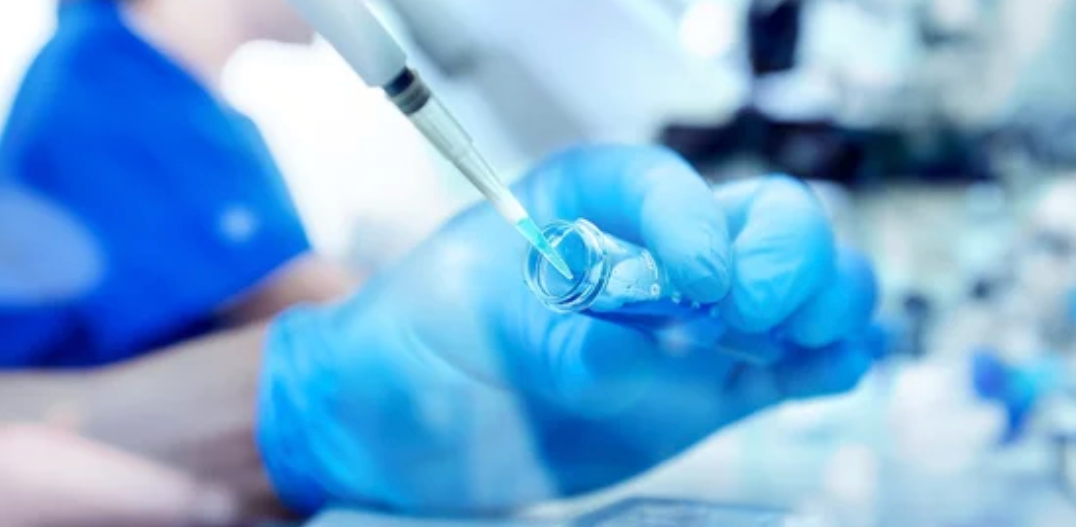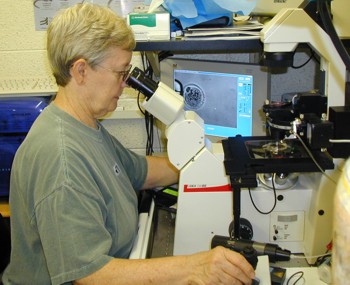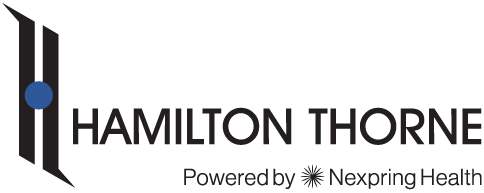
Mutant Mouse Regional Resource Center
“Mohr” Success for Mouse IVF
Kathy Mohr is the Facility Manager, Technical Director, of the Mutant Mouse Regional Resource Center (MMRRC) at the University of North Carolina. The goal of the MMRRC is “to provide the research community with genetically modified mice of known health status.” The center provides the selected mouse models to researchers on local, regional, national and international levels.
Mohr herself oversees all of importation of strains of mice from all over the world. She is also responsible for cryopreservaton of all strains, reviving the strains, and ensuring they are healthy by removing pathogens.
To revive the strains, Mohr was using traditional IVF methods. However, she found that with some of the mutant strains the sperm had trouble fertilizing oocytes. Frustrated, Mohr moved to a Piezo drill, which allowed her to put holes in the zona so that fertilization would be easier. She found that “due to the time needed for drilling several holes, the eggs were out of the incubator too long, which impacted the fertilization rate.”
Enter the XYClone. With the XYClone, Mohr says, “I have been able to take a process that took months and reduce it to days. I was able to transplant twice as many embryos.” By using the XYClone® fertilization rates doubled or more than doubled for a mutant strain. Sperm that were motile but unable to penetrate the zona could now fertilize the oocyte by entering through the laser-made hole. Mohr states that, “the XYClone® helped make the whole operation more efficient because there are fewer things to manipulate (no injection needles needed) than with a Piezo. I can quickly locate oocytes and make holes in the zona, with the end result being the oocytes are returned to the incubator sooner.” She goes on to say “the speed is very important. For embryos, the faster you can get them back to a controlled environment and into the embryo culture media the better.”
“the XYClone® is easy to set up, both the hardware and software. I can change the software settings right there on my screen and I don’t have to do a lot of manipulation – it’s easy to change the power and the time.”
Kathy Mohr, B.S.
Facility Manager, Technical Director

Facility Manager, Technical Director
University of North Carolina, Chapel Hill
http://www.mmrrc.org/
Training others on the use of the XYClone® is one of Mohr’s goals, “there is definite interest there. It would be easy to train another person to use the XYClone® for IVF. In fact the other day, one of my colleagues was using the laser and she picked up the operation during the first session.”
Mohr says that her experience with HT customer service has been good. “Both times I have had a problem with the XYClone, I called customer service and they helped me successfully troubleshoot the problem over the phone.”
Mohr definitely sees the XYClone® fitting in with the goals of the MMRRC. Currently studies are underway using the XYClone® exclusively for ICSI instead of the Piezo. Using the XYClone, Mohr believes she can get ICSI working in a reliable way so that any mouse strain can be revived and made available to the research community as long as there is fresh, frozen, or freeze-dried sperm available. Other methods of reviving strains by cloning or using spermatocytes are being investigated by the MMRRC centers; the XYClone® may be useful in these studies also.
For more information on the MMRRC program, visit their main web site at www.mmrrc.org or the UNC MMRRC web page at www.med.unc.edu/mmrrc/pages.
